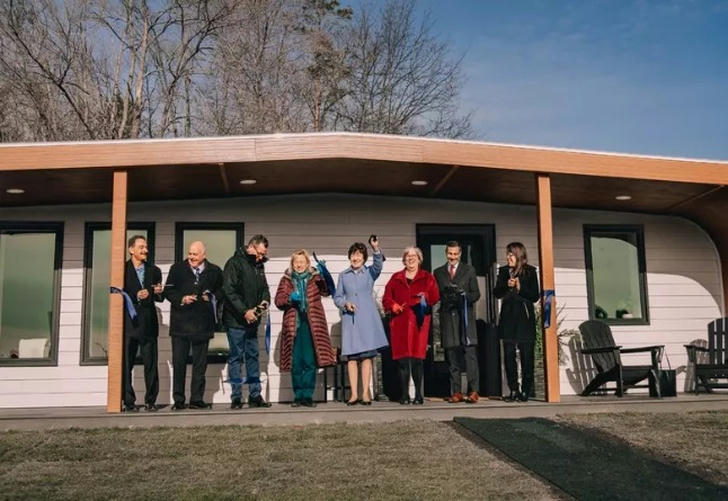Government Incentives for Home Remodeling: How to Maximize Savings on Your Project
Renovating your home is an exciting endeavor, but costs can quickly add up. Fortunately, government incentives are available to help reduce these expenses. In this article, we’ll break down the main types of government programs that can help homeowners save on remodeling costs, covering eligibility requirements, common exemptions, and specific examples of successful cases.

Understanding Eligibility for Government Incentives
Government programs for home improvements come with specific eligibility criteria that must be met:
1.Application Timing: You must apply for incentives before starting the project. These programs do not apply retroactively.
2.Project Scope: Most incentives support essential home improvements, particularly those aimed at increasing property value, rather than luxury upgrades.
3.Oversight and Inspections: Some programs require inspections before and after the project to ensure it aligns with the approved plans and meets safety and quality standards.
Example Case: In one case in Pennsylvania, a homeowner applied for a government-funded low-interest loan to replace old windows and install energy-efficient insulation. By applying before starting, they were approved and saved nearly 20% on their renovation costs due to lower interest rates.
Key Incentive Programs and Exemptions to Leverage
1.Property Tax Exemptions
Many local governments offer property tax exemptions for remodeling projects. Although eligibility rules vary by county, owner-occupied homes often qualify for total or partial exemptions. These incentives typically cover general improvements that add value, such as kitchen remodels or adding square footage.
Example Case: In Cook County, Illinois, a homeowner expanded their kitchen, triggering a temporary reduction in their property taxes for five years. By applying for this exemption, they saved hundreds of dollars each year.
2.Home Improvement Programs (HIPs)
Home Improvement Programs provide low or no-interest loans to eligible homeowners. These loans, subsidized by local governments, offer an affordable financing option. Gross income limitations and other requirements may apply, and these programs are only available for existing structures—not new construction projects.
*Example Case: A family in California used a HIP loan to install a new roof and update their heating system, significantly reducing energy costs. The low-interest rate allowed them to spread out payments without stretching their budget.
3.Energy Efficiency Rebates and Credits
Many states offer rebates and tax credits for making energy-efficient upgrades. Adding features such as energy-efficient appliances, improved insulation, and sustainable lighting can lower utility bills and earn incentives.
Example Case: A homeowner in Texas installed a new Energy Star-certified HVAC system and received a rebate that covered nearly 15% of the installation costs. Additionally, they qualified for a federal energy tax credit by filing IRS Form 5695.
4.Veteran-Specific Programs
Veterans may qualify for exclusive government grants through the Department of Veterans Affairs, such as Home Improvement and Structural Alteration (HISA) and Special Housing Adaptation (SHA) grants. These programs cater to veterans who need to modify their homes due to service-related injuries or disabilities.
Example Case: A retired Marine in Florida used an SAH grant to install a wheelchair-accessible entrance and remodel his bathroom to include grab bars and a zero-entry shower, greatly improving his quality of life.
Make Your Remodel Green and Save Even More
Making energy-efficient changes to your home can unlock even more government incentives. Simple updates like adding energy-efficient lighting or upgrading your kitchen appliances can not only reduce your environmental footprint but also lower long-term utility costs.
Use the Energy Star Rebate Finder to search for rebates on energy-efficient products by entering your zip code.
Consult Your Local Utility: Many utility companies provide cash-back offers and incentives for green upgrades. Check with your local provider to explore all options.
Example Case: A couple in Oregon replaced their kitchen lighting with LED fixtures and added a skylight to reduce the need for artificial lighting. This resulted in a 25% reduction in their monthly electricity bill and qualified them for multiple rebates that covered part of the installation costs.
Final Thoughts
Navigating government incentives for home remodeling can feel like a daunting process with paperwork and eligibility requirements. However, by leveraging tax exemptions, low-interest loans, energy rebates, and specialized grants, you can significantly reduce the cost of your project. Whether you’re a homeowner looking to upgrade or a veteran in need of home modifications, taking advantage of these government programs will make your remodeling journey smoother and more affordable.
